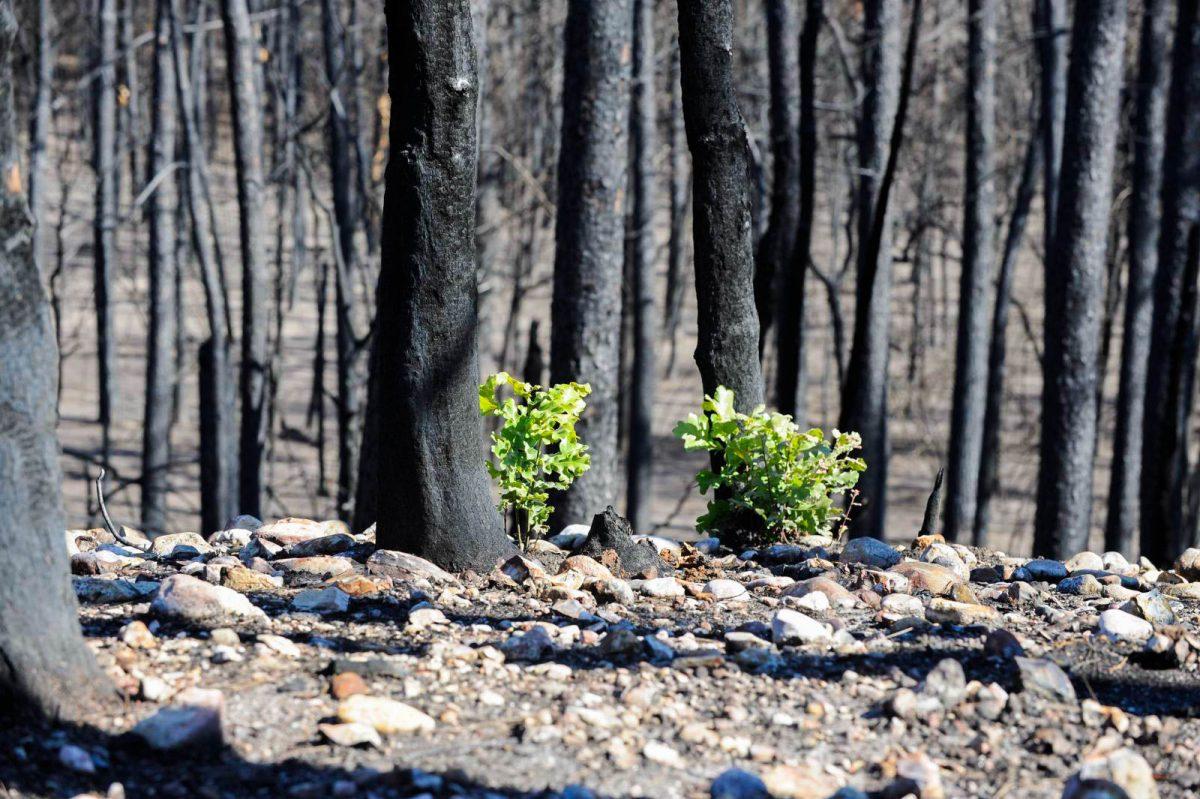For some animals and habitats, wildland fires can have surprisingly positive effects.
Since most Texas ecosystems are experiencing regular, recurring fires, most species have learned how to adapt, said Chris Schenck, state fire program leader for Texas Parks and Wildlife Department.
“Even a wildfire is generally good for animals,” Schenck said, “unless it’s under such severe conditions that it results in no growth of any vegetation.”
Dramatic climate changes pose the greatest risks to animals, he added.
“If I had to give an animal that struggles more than others or a species, I would say that ground-nesting birds have a tougher time,” Schenck said. “For instance, wild turkeys — if a fire happens during their nesting and hatching period, they could be at risk.”
Catastrophic wildfires in a watershed or drainage area can cause overlap flow that negatively affects nearby bodies of water.
“Generally, in Texas we haven’t always suffered that severe of a burn,” Schenck said. “But aquatic animals suffer more than most because it’s not like frogs and fish can actually leave their watershed very easily, and obviously fish can’t. Amphibians can only move so fast.”
Habitat conservation is one mission of Wildland Fire Management. Conducting regular, prescribed fires under optimal conditions is part of his job, Schenck said. Prescribed fire is also important for vegetation, he said, with grazing, harvesting and eliminating invasive species all part of active management.
“If we do get an unwanted wildfire at the worst time, severity is lessened by us already having introduced or reintroduced fire back into the ecosystem,” Schenck said. “We might go burn up some brush, but maybe that’s now opened up an area for a species to flourish — feed a small bird or something like that.”
Educating and empowering landowners to conduct controlled burns safely and effectively is also part of the mission, Schenck said. Wildland Fire Management uses all the “tools in our toolbox” for the benefit of all while reminding everyone that all species are important, he added.
Predators such as wolves are part of nature’s necessary “checks and balances,” though Schenck acknowledges the emotions around this topic.
“Many species are a barometer for our own well beings for how good our environment is,” Schenck said.
Canaries in coal mines was a real way to monitor environmental safety for humans, Schenck reminds people.
“We see some species suffer. We could be on that end,” he cautioned
“Life and death are a huge part,” Schenck said. “Even life and death of plants.”
This story is a collaboration between The Battalion and upperclassmen in Texas A&M’s journalism degree. To see the online copy of the Climate Change extra print edition, click here.




















